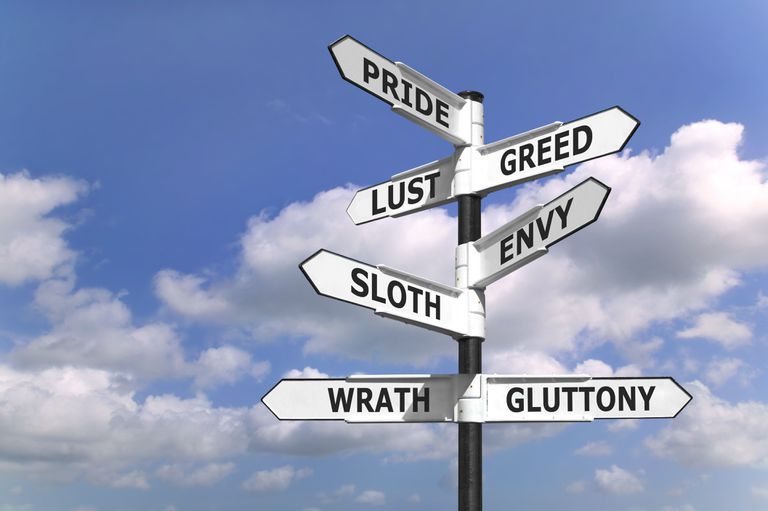Stumble into nearly any church in Mexico to escape the heat one day and notice the four triangular paintings in the dome. Sometimes it depicts the four main authors of the New Testament (Matthew, Mark, Luke and John) and other times depicted the four cardinal virtues for moral living. The English word cardinal comes from the Latin word for hinge because all other virtues hinge on these four: prudence, justice, fortitude, and temperance.
The four cardinal virtues can be practiced by anyone; thus, they represent the foundation of natural morality. A clear example in San Miguel is in the Temple of Good Health on Plaza Civica.
The first virtue is prudence that allows us to judge correctly what is right and what is wrong in any given situation. Personally, I can’t hear the word prudent without remembering the first Bush president once replying in terms of war “That wouldn’t be prudent.” forever making me think he sounded like a Victorian Era woman with the vapors that didn’t want to venture outside.
Because it is so easy to make mistakes, prudence requires us to seek the counsel of others, particularly those we know to possess sound morals. Disregarding the advice or warnings of others whose judgment does not coincide with our own is a sign of imprudence.
Prudence, in art, traditionally holds a mirror indicating historical perspective and deals with a snake symbolizing life’s difficulties.

Prudence is the most important virtue because it discerns the appropriate course of action to be taken in a given situation at the appropriate time. Justice is the constant and permanent determination to give everyone his or her rightful due. The saying that “justice is blind” implies justice should not matter what we think of a particular person. If we owe him a debt, we must repay exactly what we owe.
Justice is connected to the idea of rights. While we often use justice in a negative sense (“She got what she deserved”), justice in its proper sense is positive. Injustice occurs when we as individuals, or by law, deprive someone of that which they are owed. Legal rights can never outweigh natural ones.

Justice is the most difficult virtue for me to grasp since it deals with fairness and what is perceived as a right by one, is a luxury by another. Does everyone have a right to a good education, free healthcare or the ability to gender self-identify when using the restroom? I understand if I borrow 500 pesos from you, I owe you 500 pesos. Do you have the right to collect 1000 pesos?
The animal allegory for justice dumbfounded early man. The ostrich has feathers and lays eggs, so it is a bird, but doesn’t fly and looks like a monster. In ancient Egypt, the soul’s passage to the underworld was determined by weighing the heart against an ostrich feather, and since the time of hieroglyphics justice is seen as an ostrich.

The third cardinal virtue, fortitude, is commonly thought of as courage, like in the Cowardly Lion from Oz as a lion always represents courage in art. Fortitude allows us to overcome fear in the face of obstacles, but it is always reasoned; the person exercising fortitude does not seek danger for danger’s sake. Prudence and justice are the virtues through which we decide what needs to be done; fortitude gives us the strength to do it.
Fortitude is considered a gift of the Holy Spirit, allowing us to rise above our natural fears.

While fortitude is concerned with the restraint of fear, temperance is restraint of our desires or passions. Food, drink, and sex are all necessary for our survival, individually and as a species; yet an obsessive desire for food, drink or sex can have disastrous consequences, physical and moral.
Temperance is the virtue that attempts to keep us from excess, and, as such, requires the balancing of legitimate needs against our inordinate desire for them. Oddly, the removal of alcohol completely in the early 20th century United States was called the Temperance Movement, meaning no alcohol could be legally consumed. Temperance itself requires self-control, rather than abstinence.
The animal allegory is the elephant, which in art also often represents Adam and Even in the garden of Eden where they lacked a bit of restraint.

The cardinal virtues pictured in the temple are often combined with faith, hope and love to form the seven virtues. While the first four date back to Greek philosophers to all people seeking to live a moral life in a good place, while faith, hope and love came to Christians from the writings of St. Paul.
The seven virtues are the counterpart to the Seven Deadly sins: Wrath/Anger, Greed, Sloth/Laziness, Pride, Lust, Envy, and Gluttony.

When I was a child I remember my sister asking my father what deadly sin did the nuns commit daily forcing them to weekly confession before Sunday mass. Without missing a beat, and with a nod to many Brides of Christ’s zaftig size, he replied “Gluttony”.

by Joseph Toone

DISCLAIMER: The opinions expressed hereby are those of the author and not necessarily those of the San Miguel Times.


